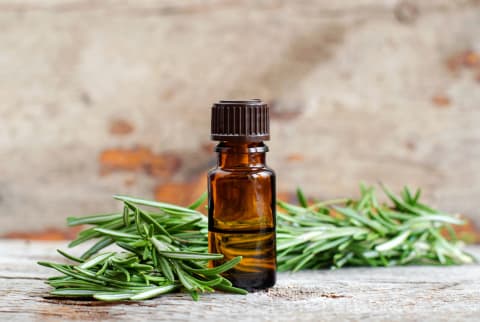
mbg Assistant Beauty Editor
mbg Assistant Beauty Editor
Hannah Frye is the Assistant Beauty Editor at mindbodygreen. She has a B.S. in journalism and a minor in women’s, gender, and queer studies from California Polytechnic State University, San Luis Obispo. Hannah has written across lifestyle sections including health, wellness, sustainability, personal development, and more.

Image by istock // kazmulka
January 23, 2023
Our editors have independently chosen the products listed on this page. If you purchase something mentioned in this article, we may
Rosemary oil has been used in the beauty space for ages but recently had a TikTok resurgence for its powerful hair growth benefits. However, there’s one caveat that you should know—one huge mistake can actually lead to the opposite effect, and many beauty fans are making it as we speak.
Here, the key to using this botanical oil to its full potential and why it’s so important.
Advertisement
This ad is displayed using third party content and we do not control its accessibility features.
How to dilute rosemary oil for hair.
The grave mistake in question? Using pure rosemary essential oil on your scalp. See, rosemary oil is an essential oil, and it is highly potent (like many other EOs), so it may actually irritate the skin when used on its own. As any expert will warn you: Never use straight-up essential oils directly on your skin or scalp.
We expect this is the reason some users have reported their hair falling out after using rosemary oil for a few months. Here’s the deal: Your scalp needs to be in a healthy, calm state for your strands to grow, and irritation is one way to disrupt a healthy scalp microbiome. Not to mention, constant irritation can lead to scalp inflammation, which can result in hair loss if left untreated.
That said, just dilute your formula to reverse the issue. Here are three easy ways to do it:
1.
Make your own scalp treatment.
First, pick your base oil. A few great options include jojoba, argan, or coconut oil (more here if you want to explore your options). Then in a dropper bottle, add anywhere from three to 15 drops of rosemary oil, depending on the size of your carrier container—the larger the size, the more rosemary oil you can use.
Advertisement
This ad is displayed using third party content and we do not control its accessibility features.
2.
Add it to a pre-formulated hair product.
If you have a hair oil or scalp serum you already love, it might be easier to add rosemary oil to that product as is. Go with the same ratio as above, and use your new supercharged scalp treatment as a daily boost or as the first step in your hair slugging ritual.
If you want to shake things up, you may consider a rinse as opposed to a traditional oil. Here’s how to make one:
- Pour 5 cups of water into a large pot. Drop in 5 sprigs of rosemary (1 sprig for each cup of water), and turn the heat on medium-high. Let the water come to a boil.
- Once you have a rolling boil, leave the mixture for 15 minutes.
- After 15 minutes, turn off the heat and then let it sit for another 25 minutes.
- Strain the mixture and pour the liquid into a jar. Store at room temperature away from sunlight and use within 3 months for the best results.
Advertisement
This ad is displayed using third party content and we do not control its accessibility features.
See here for the full breakdown.
The takeaway.
So, there you have it—three different ways to use rosemary oil that will actually stimulate hair growth, not irritate the scalp. If you want to take a deeper dive into the clinically researched benefits of this botanical extract, check out our full guide to rosemary oil for hair growth here.
Advertisement
This ad is displayed using third party content and we do not control its accessibility features.

